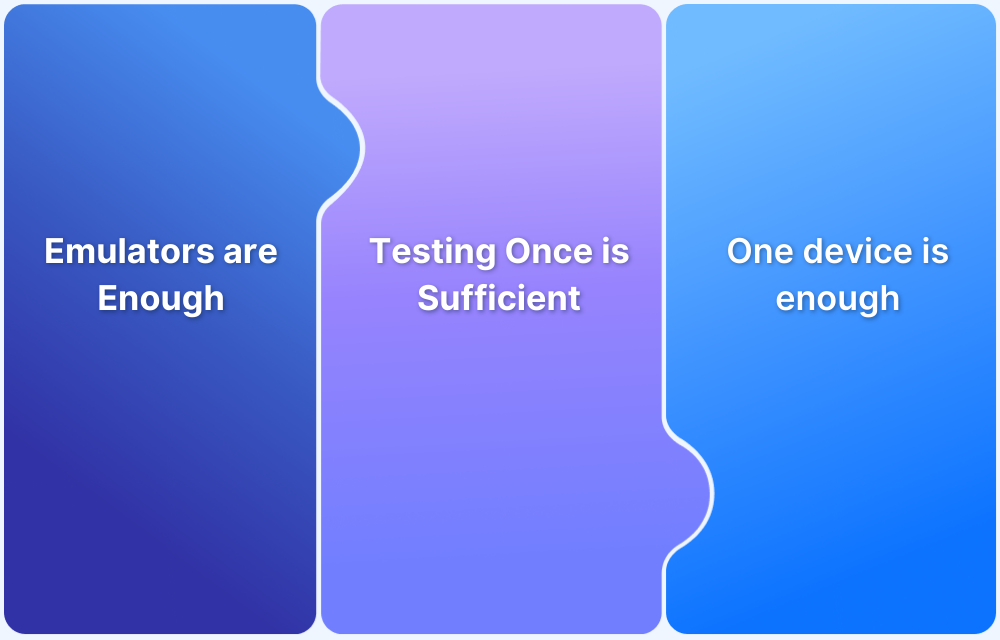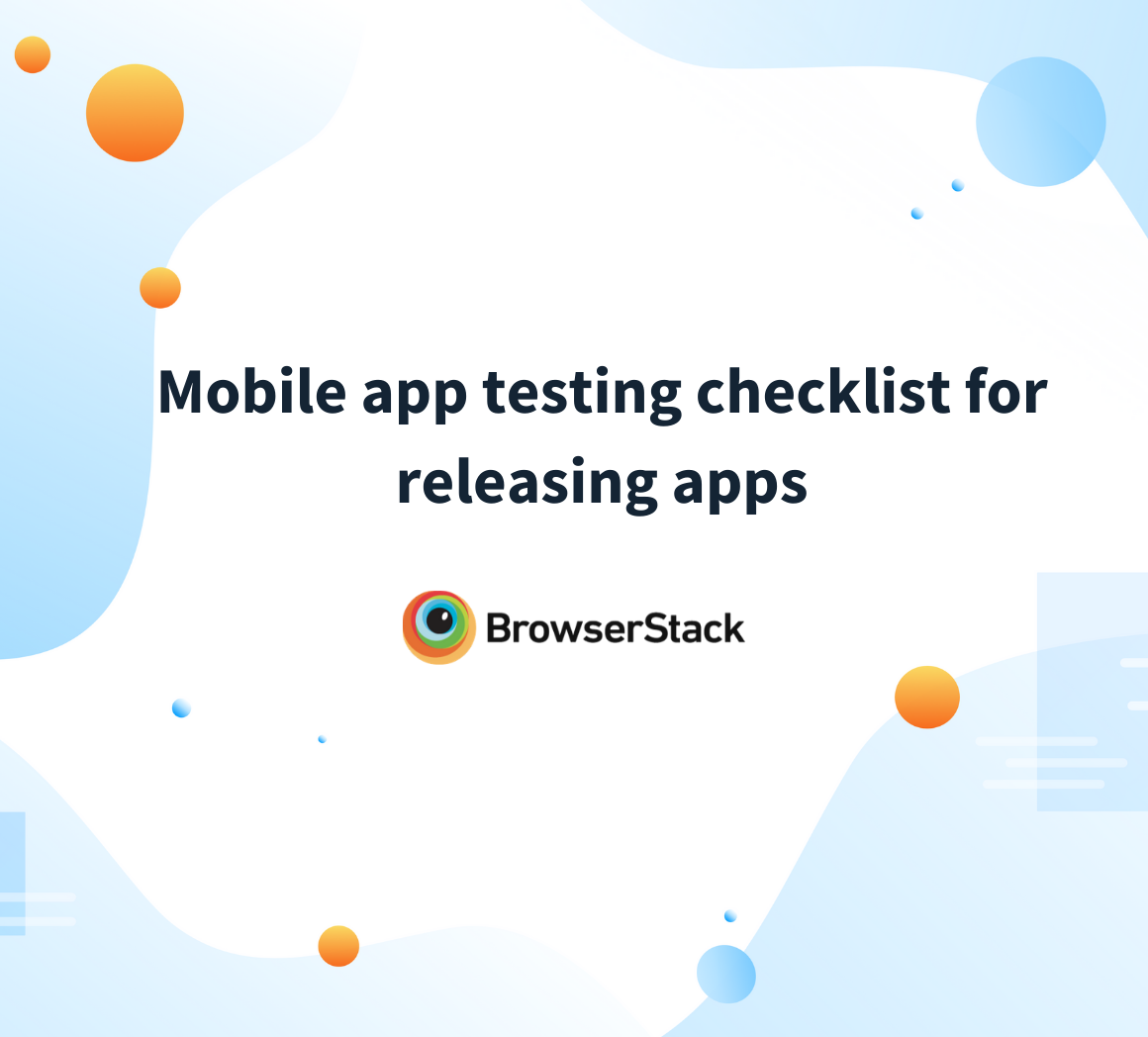Strategies for efficient Mobile App Testing
Shreya Bose, Technical Content Writer at BrowserStack - May 20, 2020
Mobile app users know exactly what they want, and they do not compromise. Less than 25% of all mobile app users return after day 1 of usage. Out of all customers upset with an app, only 4% actually leave feedback or complain. Most will uninstall, delete, and never look back. What’s worse, users might share a bad review on the Play store or share their poor experience with friends.
This expectation of perfection is why mobile app testing has become integral to all software testing lifecycles. Mobile app QA testing ensures that each app works exactly as it is meant to and runs without interruption, irrespective of which device is being used to access it.
This article will explore a few strategies that streamline and set up mobile testing for success. By implementing them, testing teams and organizations give themselves the best chance for creating high-functioning apps that appeal to their target users.
3 Mobile App Testing Strategies to streamlines processes
1. Be clear about the challenges
Every mobile testing project must grapple with a couple of challenges, which are unique to the mobile environment. These include:
- Significant device fragmentation: As of 2019, more than 4 billion people access the web through combinations of 9000+ distinct devices, shipped with 21 different operating systems (vendor + version). Each app must be optimized to offer flawless performance on an increasing number of device profiles. QA teams must also keep in mind the different versions of every operating system accompanying these devices.
Try App Testing on Real Device Cloud for Free
- Tools and Resources: Be it manual or automated testing, mobile app testing cannot be accurately conducted without the right tools. Most teams do not have access to an in-house lab with the requisite number and variety of device-OS combinations for real-world testing. Naturally, teams must find cloud-based options for testing, so that they can access the necessary devices, frameworks, and other resources. Automated app testing also requires testers with technical expertise in handling the necessary mobile application testing frameworks, test scripts, etc.
2. Choosing between emulators and physical devices
In the initial stages of development, emulators and simulators can be used to test singular features quickly.
However, emulators are not adequate for testing mobile apps. Here’s a mantra for mobile app testing in all forms:
There is no way to publish a successful app without testing it on real devices. Without testing in real user conditions, an app is likely to malfunction in key areas and incur the displeasure of users.
Just to emphasize the point, here is a list of things one can test on real devices but not on emulators and simulators:
- Low battery, battery drainage, abrupt power off
- App performance during incoming interruptions such as calls or SMS
- Overheating
- Conflicts with other preinstalled apps
- Geolocation
- Multiple networks – Wifi, 3G, 4G, etc.
- Network density
- Localized features
Additionally, testing on real devices promises accurate results every time – not the case with virtual machines which can throw up false positives.
Start Free App Testing on Real Devices
To learn more about how real device testing is better, have a look at this page on Emulators vs Real Devices.
3. Organize Beta Testing
Just as real device testing is the best way to gauge the real-world performance of an app, beta testing is the best way to judge user reception. It’s best to start looking for beta testers from the beginning of the project, since finding the right testers can take a while.
- Look for users who are already loyal to the app. In case the app being released is brand new, look among users who have been long-time users of other apps published by the same organization. Often, the users who leave feedback, contact the company for complaints and follow-up are the ones who make the best beta testers. Essentially, look for individuals who actively engage with the product, and solicit their opinion.
- A limited launch can also help with securing beta testing. Distribute the app to a specific region, or inform users downloading the app that it is a beta version being tested.
- Do remember that, no matter the quality or number of beta testers, it cannot help create success for an app without being accompanied by analytics and monitoring tools. Before beta testing, establish tools and mechanisms that let testers track how users interact with the app, the frequency with which they interact (and with which feature) as well as how features malfunction (if they do). Do not just depend on user feedback to get insight into app performance. See for yourself.
- Build the app or feature with a capability that allows testers and developers to enable and disable individual features and functionalities at will. By doing so, one can assign different features to different sets of beta testers. This takes the pressure off them – one can’t expect beta testers to thoroughly test every app feature and offer detailed feedback consistently.
These mobile app testing strategies address multiple challenges that come with developing and releasing an app with a competitive edge. Since user expectations are high, testing teams must build their processes around these actions in order to give their apps a realistic chance at success.



